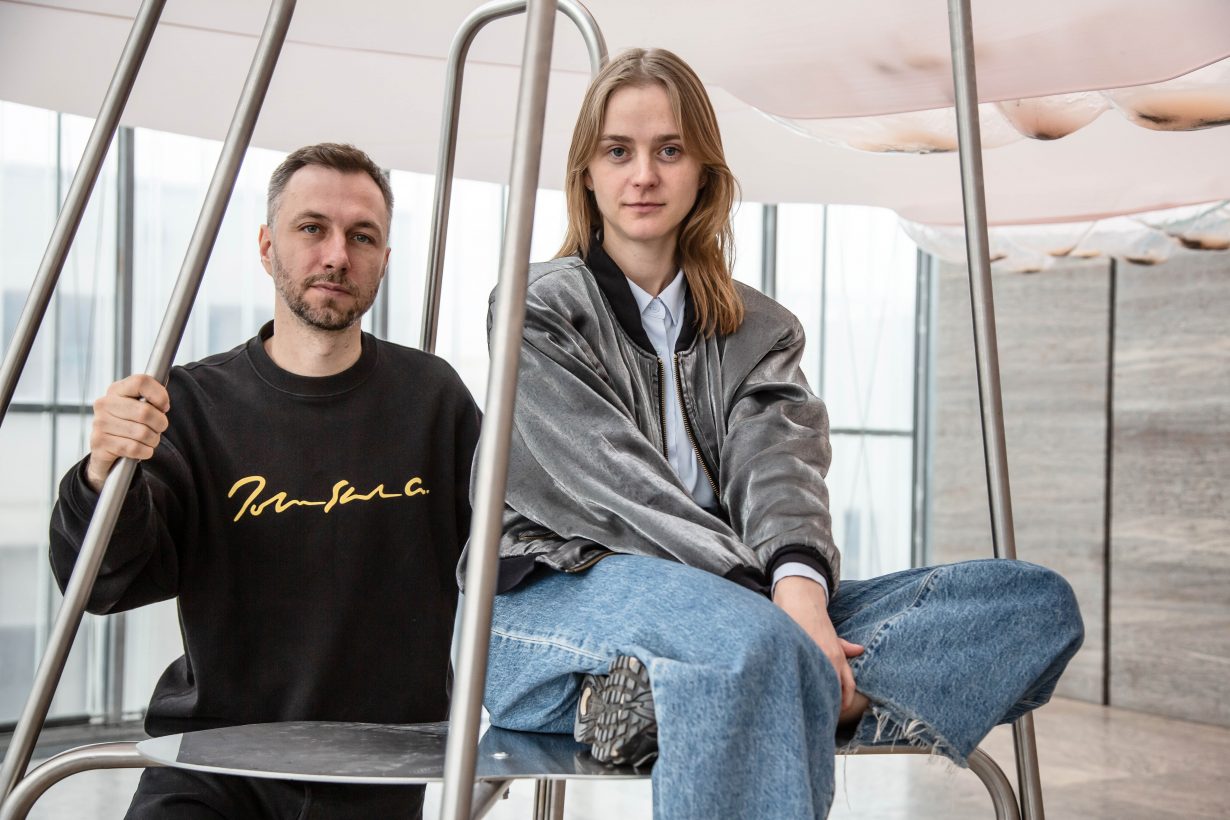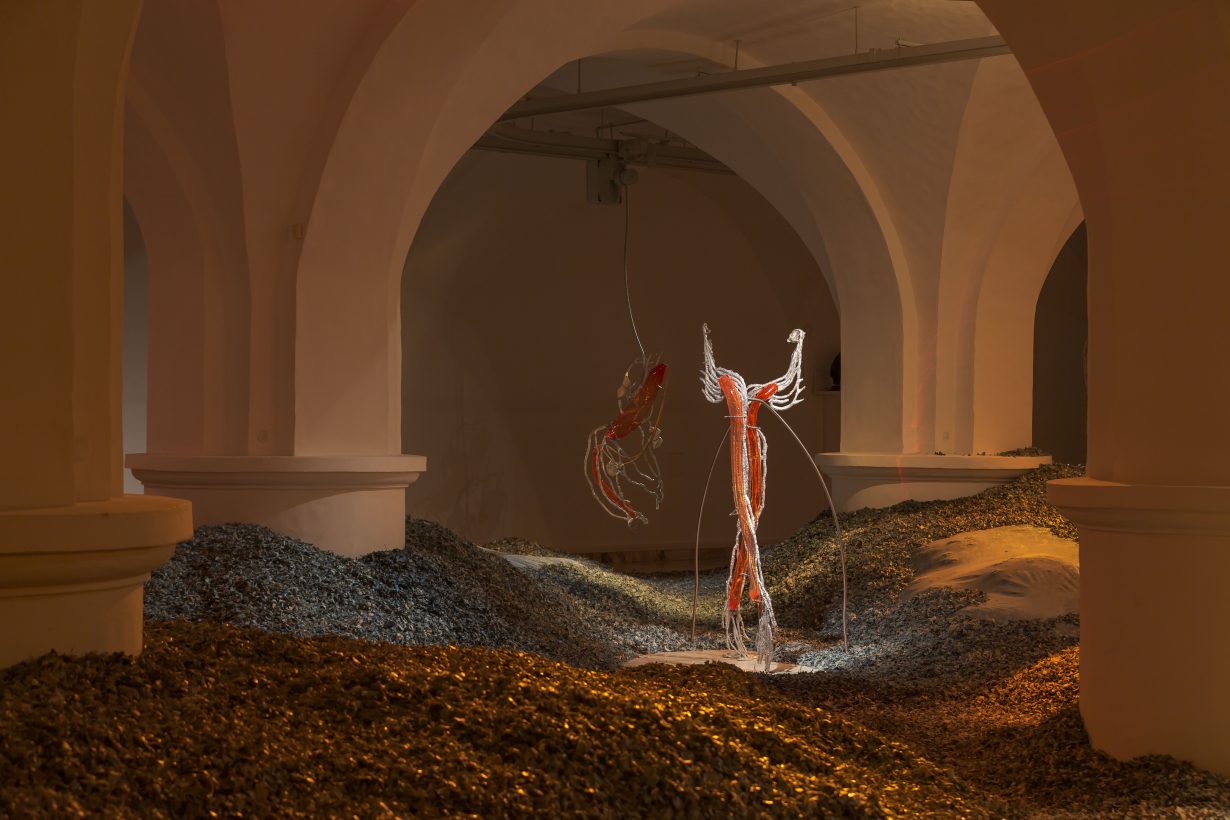ArtReview sent a questionnaire to artists and curators exhibiting in and curating the various national pavilions of the 2024 Venice Biennale, the responses to which will be published daily in the leadup to and during the Venice Biennale, which runs from 20 April to 24 November.
Pakui Hardware are representing Lithuania; the pavilion is in Chiesa di Sant’Antonin, Salizada S. Antonin 3477.

ArtReview What do you think of when you think of Venice?
Pakui Hardware Of Don’t Look Now (1973) by Nicolas Roeg – with all the ghosts, hallucinations, melancholy and sensual darkness evoked by the rich history, maze-like architecture and the shimmering water of this surreal and majestic city.
AR What can you tell us about your exhibition plans for Venice?
PH We are preparing a large-scale installation, which is more of a state – of mind or body – than a show, throwing the pieces in it and the viewers themselves into a slightly feverish mode. Titled ‘Inflammation’, it explores how both current conditions and historic systemic oppressions cause chronic inflammations of both human and planetary bodies. As opposed to the Western cosmology of dualisms and separation, it calls for a more porous and interconnected approach towards what surrounds us and what is within us. Before moving towards convalescence, it is first important to make the right diagnosis – to throw away subjugation and extractivist mindsets. This installation will also contain a selection of paintings by a Lithuanian artist Marija Teresė Rožanskaitė, depicting various scenes from the medicine, made in the 1970s and 80s, this way creating a trans-generational conversation. The pavilion is a collective effort, thus it is crucial to mention the input of Isora x Lozuraityte Studio who created the architectural environment for the show, the commissioner Arūnas Gelūnas, who supported this vision from day one, the curators Valentinas Klimašauskas & João Laia, as well as a whole number of incredible minds and hands that together built this fragile ‘Station of Hope’, as Klimašauskas puts it in his catalogue essay.
AR Why is the Venice Biennale still important, if at all? And what is the importance of showing there? Is it about visibility, inclusion, acknowledgment?
PH However problematic (we all know why), this event is a forum in which multiple voices can share the same stage. The voices can come from very different traditions and have very different tonalities and rhythms. It is also like an enormous thermometer, showing what are the current ‘temperatures’ and sates of the (art)world.
AR When you make artworks do you have a specific audience in mind?
PH It is both our parents who are of an older generation, yet curious enough and fellow artists, who are always the toughest critics. If a piece or an installation evokes a mixed sense of alluring and the uncanny as well as an illusion of effortlessness (because it’s never unlaborious) and then also leaves you wondering – it works!

AR Do you think there is such a thing as national art? Or is all art universal? Is there something that defines your nation’s artistic traditions? And what is misunderstood or forgotten about your nation’s art history?
PH Probably the most interesting art throughout history is the one that transgresses the idea of some sort of national art, but which also is born from and carries within a certain degree of local history, temper, climate, culture. And it is not about ‘nation’, but about the material and immaterial histories that are embedded in each corner of the world.
What is quite specific about Lithuanian art scene is that, due to the lack of strong art market, artists and organizations don’t need to take the commercial aspect into consideration and that has led to an incredible history of experimentation and cross-disciplinary collaboration.
AR If someone were to visit your nation, what three things would you recommend they see or read in order to understand it better?
PH To read some (which are still too few) scholarly studies on Russian colonialism, to make sense of the hypersensitivity towards every move and word our big neighbour is doing.
To celebrate Midsummer in a foresty countryside, to grasp the tiny left-overs of pre-Christian cosmology in which trees and streams are able to talk.
To watch Laurynas Bareisa’s Piligrims (2021) to be aware of the dark sides of the contemporary ‘nation’.
AR Which other artists have influenced or inspired you?
PH Alina Szapocznikow, Eva Hesse, Lynda Benglis, Anu Põder, Marija Teresė Rožanskaitė.
AR What, other than your own work, are you looking forward to seeing while you are in Venice?
PH The main exhibition, of course, which will be exceptional this year as it will show all the artists previously unexhibited in the biennale, thus introducing exciting new voices, as well as all of the national pavilions – of how they’ll deal with the main theme of the biennale in their own unique ways.
The 60th Venice Biennale, 20 April – 24 November